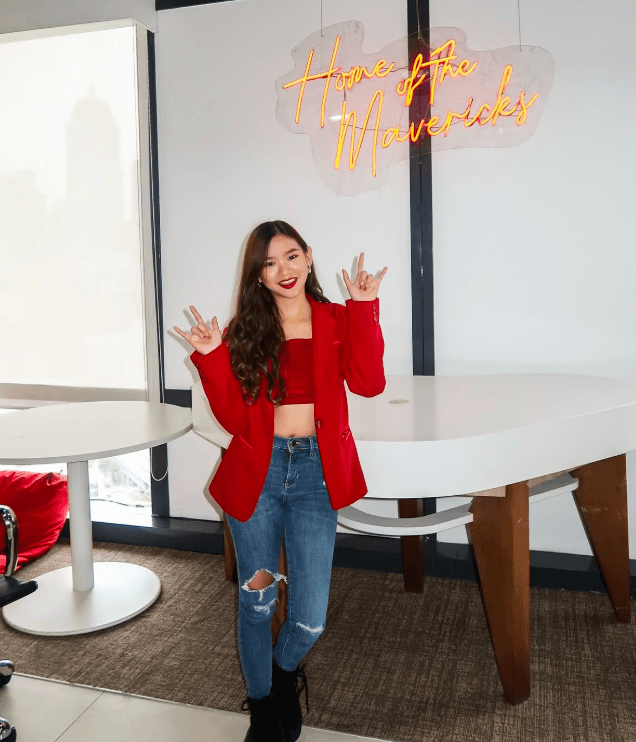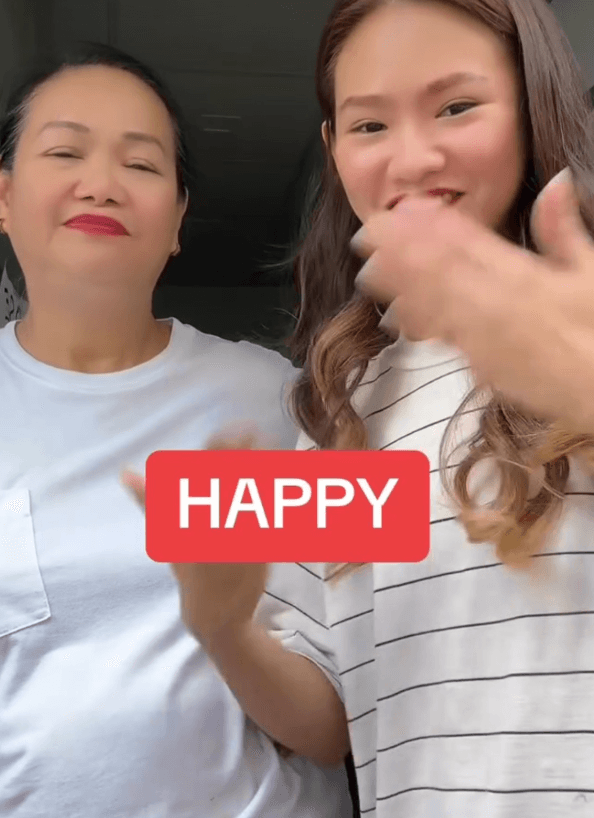When we talk about influencers, we often think of people who speak to an audience with their voices—through vlogs, podcasts, or social media videos. But what if I told you that one of the most inspiring influencers I’ve come across speaks through her hands?
Meet Grace Maniquis, the woman behind DEAFinitely Beautiful, a social media platform with over 350,000 followers that showcases her journey as a deaf creator and amplifies the voices of an entire community that is often unheard—literally and figuratively.

My editor was the first to introduce me to Grace after she met her at a Cherry Mobile event last year. She immediately said, “You’d love to ‘speak’ with her,” knowing my passion for inclusion and advocacy for the PWD community. She was right. From the first moment of our conversation, it was clear that Grace isn’t just advocating for the deaf community—she’s redefining what it means to be seen, heard, and understood.
Her content isn’t just about spreading awareness; it’s about empowerment, confidence, and the simple truth that beauty—inside and out—needs no sound.
Breaking barriers
Grace’s journey into social media started with a purpose: to challenge stereotypes and show that deafness is not a limitation but a different way of experiencing the world. "I always watched YouTube vloggers and one day, I noticed that most content is created for hearing people. But what about the deaf community?" she shared. Determined to create content that bridged the gap, she asked herself, "Should I start making videos? Why not?" And from there, DEAFinitely Beautiful was born.
"Growing up, I noticed a lack of representation of the deaf community, which inspired me to create content that highlights deaf culture and promotes accessibility," she explained. Her goal is to challenge stereotypes, educate others, and create an inclusive space where deaf and hearing individuals can connect and learn from each other.
In an era where digital platforms dominate how we connect, technology has become a game-changer for inclusivity. Grace maximizes the power of social media to create content, engage with her audience, and share educational insights about the deaf community. Just like Nyle DiMarco, the deaf model and activist who won America’s Next Top Model, and other hearing-impaired influencers, she is proof that technology can bridge communication gaps.

"Video editing tools help me add visuals that make my content more engaging, while captions make my videos accessible to both deaf and hearing viewers," she said. "The use of text-to-speech technology also helps me add voiceovers, making my content more inclusive. Without these technologies, it would be much harder to connect with people and share my message."
Apps like YouTube, Instagram, TikTok, and Google Live Transcribe are crucial in making her content more accessible. "TikTok's automatic captions make it easier to reach a wider audience, and video editing tools like Capcut allow me to easily add captions and adjust audio," she added. These tools support her and help break down communication barriers between the deaf and hearing communities.
Challenges and overcoming them
Navigating a predominantly hearing-oriented industry isn’t without its challenges. "My biggest challenges are ensuring accessibility and breaking through the lack of representation," Grace admitted. Many platforms aren’t designed with the needs of the deaf community in mind, so she has to be creative, integrating captions, sign language, and text-to-speech applications to make her content as inclusive as possible.

Her favorite Korean actors, Hollywood girls, and dream persons she would like to interview are: Gong Yoo, Margot Robbie, Julia Montes, and her parents. “I wanted to interview Julia Montes because I believe that she grew up or was cared for by her deaf grandmother.”
She has also encountered numerous misconceptions about the deaf community. "People assume all deaf individuals can read lips or rely only on sign language, but that’s not always the case," she shared. Some have even questioned her identity, asking, ‘How can you read our comments when you are deaf?’ or ‘How can you put music in your videos if you are deaf?’ To address these, she continues to educate her audience, emphasizing that deaf individuals communicate in various ways and have diverse experiences.
Inclusion more than a trend
She said inclusion should never be a buzzword—it should be a way of life. That’s why I support organizations like Best Buddies Philippines, which fosters friendships and opportunities for people with intellectual and physical disabilities. It’s why I celebrate brands like Hapee (toothpaste), Bench, Subway, and Overdoughs, just to name a few, which actively employ and support deaf individuals. Just recently, Grab featured Romalito, a talented dancer and friend of my late brother, as part of their campaign highlighting inspiring individuals in the workforce. These initiatives prove that when businesses step up, they don’t just change lives—they change perspectives.
It’s inspiring to see small or big businesses embrace inclusivity, but there’s still a long way to go. Due to a lack of awareness and accommodations, many workplaces remain inaccessible to the deaf and hard-of-hearing community.
Grace is using her platform to push for real change, advocating for equal opportunities and a world where deaf individuals don’t have to fight for the respect and chances they deserve.
Why we should all learn to sign
If there’s one takeaway from my conversation with Grace, it’s this: Sign language is not just for the deaf; it’s for everyone. Learning even a few signs can change someone’s day, open up new friendships, and foster a world where no one feels left out. It’s a small effort that makes a huge impact.